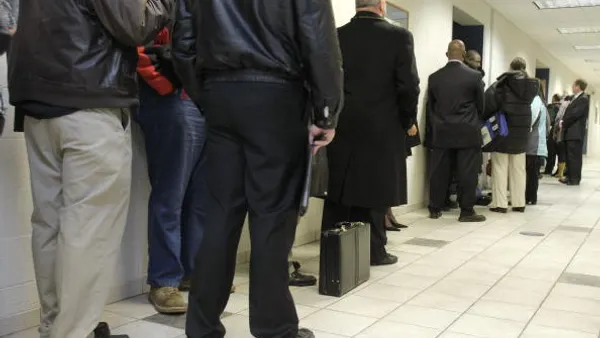Ten pathway changes to education, training and work experience have the greatest chance of improving worker development, especially among young adults, according to a May 1 report from Georgetown University’s Center on Education and the Workforce.
Many of the pathways emphasize educational attainment, including traditional degree-based programs, while others highlight on-the-job training and alternative credential programs.
“Our research clearly indicates that the bachelor’s degree is still the most traveled pathway to a good job. But through this work, we also find there are alternative pathways to good jobs through career and technical education (CTE) and work experience,” Anthony Carnevale, the lead author and director of Center on Education and the Workforce, said in a statement.
“Pathways to good jobs are especially strengthened through comprehensive policy efforts that layer effective interventions on top of one another,” he said.
Carnevale and colleagues created a Pathways-to-Career policy simulation model, which incorporates longitudinal data to identify life junctures where a strategic intervention could make a difference and increase the likelihood of working in a “good job,” defined as a minimum annual earning of $38,000 per year and median of $57,000 at age 30.
Importantly, the effectiveness of the 10 pathway changes varies by race, gender and class. For instance, specializing in career and technical education in high school increases the likelihood of having a good job at age 30 for White and Black young adults, but in contrast, it reduces the likelihood for Hispanic and Latino young adults.
In addition, nearly every pathway change has the potential to put more men, White youth and young adults, and individuals from lower socioeconomic backgrounds in good jobs at age 30. Using the pathway changes to narrow current gaps could benefit young adults, the report authors wrote.
“We can build stronger pathways to good jobs in young adulthood through education, sectoral training, and workforce development,” Zack Mabel, a report co-author and research professor at the Center on Education and the Workforce, said in the statement.
“But addressing disparities in access to good jobs also requires combating bias and discrimination in the labor market, directing investments toward individuals from historically disadvantaged groups, and raising wages in undervalued occupations that are mostly filled by workers from marginalized groups and are crucial to the functioning of our society,” he said. “A coordinated and comprehensive policy strategy is therefore needed to expand access to economic opportunity broadly while also achieving economic justice on a societal level.”
In recent years, employers have voiced stronger support for upskilling, alternative credential programs and practical work experience. More than half of middle-skill jobs don’t need a four-year degree, according to recent research shared with HR Dive. Instead, job descriptions focused on skill-specific requirements can attract a more diverse and prepared workforce.
As public and private employers make announcements and begin to adapt their practices, several barriers may arise. Scheduling, finances and child care may create hurdles to upskilling, according to a recent report from the U.S. Government Accountability Office.
Despite the challenges, some employers are already making an effort. For example, Cleveland Clinic has adopted a skills-first approach, removed some of its four-year degree requirements, created skills-based career pathways, launched apprenticeships programs, revised more than 260 job descriptions and reworked more than 2,000 roles to accommodate better hiring practices.












